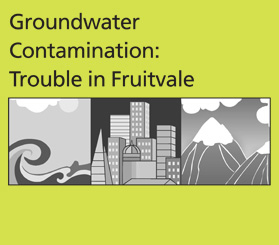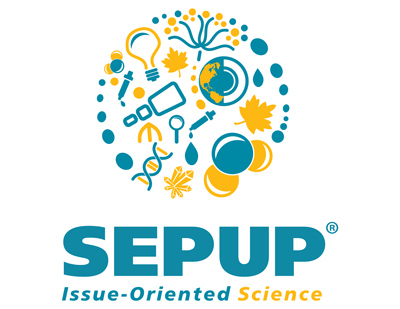Groundwater Contamination: Trouble in Fruitvale – Module Issues in the News for Students

News
Groundwater Contamination: Trouble in Fruitvale
Read summaries below of recent news related to groundwater contamination.
Pesticide Misuse May Be Due to Poor Directions
The purpose of pesticides is to kill pests. Unfortunately, many pesticides are unhealthy to humans as well. That’s why the correct use of pesticides is so important. Often, people misuse pesticides by using too strong of a concentration, applying it too often, using an outdoor pesticide indoors, failing to follow the directions, or failing to wear the required protective clothing.
Researchers at Virginia Tech University and North Carolina State University are investigating how language and cultural differences among people can affect how they follow directions on pesticide use. The trend toward more migrant workers in the United States and more pesticides being shipped abroad brings the problem into focus. Different cultures have different interpretations of language, color, and symbols. Because packaging can be confusing, directions are often not followed. The study is aimed at making suggestions for uniform symbols and labeling of packages, as well as suggesting how to train workers in symbol interpretation and safety communication.
Microorganisms Help Break Down Pesticide
Endosulfan is a toxic pesticide used to control insects and mites. Like many pesticides, it has been found in the atmosphere, soil, surface water, groundwater, and food. It is similar to the pesticide DDT and, like DDT, can persist for years in the environment without breaking down. This is a problem because endosulfan residue can affect the human nervous system, interfere with kidney and liver function, and cause mutations in animals and humans.
Researchers have recently found two microorganisms that break down endosulfan. This is good news because residue problems from endosulfan are widespread—it is found in the environments of 38 states. Project leader William T. Frankenberger, a professor at University of California at Riverside, says, “Pollutants can be degraded by microorganisms when they use the toxin as a carbon and energy source.”
New Device Checks for Groundwater Pollution
When groundwater is polluted, it takes time and money to measure the plume or the extent of the pollution. Many different sites must be drilled or dug up and then tested. University of Rhode Island geophysicist Reinhard Frohlich has developed a simpler, less expensive process to determine the extent of groundwater pollution.
He puts two spikes into the ground and runs an electric current between the spikes. The voltage between the spikes is measured to determine the resistivity of the soil. This determines whether the area is polluted. “Resistivity increases significantly in areas where the aquifer is polluted compared to clean areas,” Frohlich said. The system works on organic compounds whether or not they conduct electricity.
This system can only determine if an area is polluted, and not the amount of pollution. “It’s one thing to identify a clean or contaminated site, but we want to also get a quantitative value for the contaminants,” said Frohlich.
Mine Drainage: Self-Cleaning Contaminated Water?
Polluted water that cleans itself? That is what seems to be happening in Rowe, Massachusetts. In 1911, an old sulfide mine collapsed and filled with acidic groundwater. The mine contained a lot of heavy metals such as copper, zinc, and iron that began to dissolve in the water. Since then, the drainage from the mine seems to be cleaning itself.
In 2002, a team of researchers from the University of Massachusetts at Amherst figured out that bacteria are helping to neutralize the acidic water and break down the heavy metals. They hope to identify exactly which microorganisms are responsible so they can be be used at other contaminated sites. They also know the surrounding rock is helping in the cleanup process, but they don’t understand how.
Studying the geology of the area and its role in the cleaning of the groundwater will provide them with answers. The research group plans to study the mine and the groundwater drainage for the next five years.

